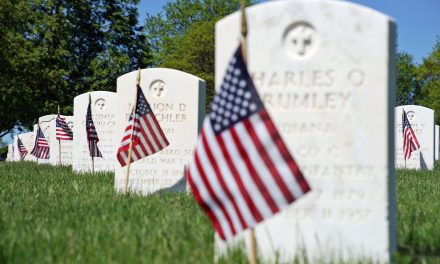
Walter Forbes (37 years); Jaythan Kendrick (25 years); Olin Coones (11 years); Emmanuelle Cooper (27 years); Joseph Webster (14 years); James Watson (39 years); Michael Shakel (18 years); Gary Bennett (18 years); Gerard Domond (31 years); Antonio Martinez (30 years); Robert Smith (30 years).
This list includes the eleven men who were exonerated and released from prison in the last two months of 2020, after being wrongly incarcerated and convicted in a court of law in the United States for murder and the number of years they served in prison before release. Of these eleven men, seven were Black, three White and one Latino/Hispanic.
They are a very small part of the 2,706 people who have been exonerated across the country since 1989. A total of 1,337 Blacks, 987 Whites, 317 Hispanics and 63 persons of other races have been exonerated for a variety of reasons. Unlike what we see on television typically, only 527 exonerations (19.5%) were the result of DNA evidence proving their innocence. Fifty-nine percent of exonerations had perjured testimony or a false accusation, twenty-eight percent of exonerations included mistaken witness identification, twelve percent included a false confession, twenty-five percent included false or misleading forensic evidence. Most cases included multiple factors. Of those exonerated, 1,087 were convicted of homicide.
At the same time, President Trump recently pardoned Nicholas Slatten, Paul Slough, Evan Liberty and Dustin Heard, all contractors working for private military contractor Blackwater while working for the U.S. government in Iraq. They were convicted of opening fire in 2007 on a group of unarmed people in a crowded square in Baghdad, killing 14 civilians, including two children, one who was only nine years old and injuring 17 others. Witnesses described how they ambushed the civilians using heavy gunfire and grenade launchers. A survivor, Hassan Salman, responded to the news of the pardons by saying, “Today we were surprised that the American president issued a decision to pardon these criminals, murderers and thugs.” Each were given sentences ranging from 12 years to life and now they are all free men.
This shows the utter hypocrisy of our system of justice that these men who slaughtered civilians have been given a get out of jail free card in the form of a pardon by the outgoing president of the nation that is responsible for these deaths. Since 2007, when these men murdered those 14 Iraqis, 682 Americans have been exonerated and released from prison.
I hate to hear all the mostly empty conversations about criminal justice and prison reform from our elected officials. Reform is defined as; the improvement or amendment of what is wrong, corrupt, unsatisfactory, etc. The system needs more than improvement. When over 1,000 people spent years behind bars after being falsely accused, convicted and sentenced to long prison terms for murders they did not commit that means that something is not working about the system. When we hear about reform it never includes holding the police, prosecutors and judges responsible for doing their jobs poorly. In many of these exonerations, the authorities responsible for the wrongful arrests, convictions and sentences still claim these people are guilty.
We have been led to trust the system by watching countless hours of cop and judicial shows that I intentionally, derisively call “copaganda.” We think the system works efficiently and effectively protecting us from “bad guys” because of these shows. How do we feel safe when, while these 1,087 people were rotting in prison the real murderers were walking the streets freely?
I know some will say that this is really a small number of bad convictions and that most of the time they get it right. Tell that to these people that rotted away in prison and will never get those years back. Men and women who will never be seen as completely innocent and who lost years with their families because of bad policing and prosecuting. If people were aware of how difficult it is to overturn a conviction, they would know that there are many more innocents in prison than these that have been fortunate enough to be exonerated.
In 55 percent of all the exonerations, one of the contributing factors was official misconduct. In example to show just how this plays out is the August 1983 conviction of 26-year-old Reginald Adams in New Orleans.
In October 1979, 24-year-old Cathy Ulfers was shot to death after interrupting a burglary in her home. Her husband, New Orleans Police Officer Ronald Ulfers was considered a suspect initially. After three trials, Adams was found guilty and sentenced to life without the possibility of parole. The officers in the case, New Orleans Detectives Martin Venezia and Frank Ruiz said that no murder weapon was discovered and that no objects taken in the burglary had been recovered. The detectives had recovered the murder weapon within a month after the crime—and nearly a year before detectives obtained a false confession from Adams. Maurice Possley wrote on the webpage of the National Registry of Exonerations:
“This testimony was false. The detectives and the prosecutors in the case, Ronald Bodenheimer and Harold J. Gilbert Jr., deliberately concealed critical information that pointed to other suspects who had no connection to Adams.”
The gun had been matched to the bullets that killed Cathy Ulfers. The gun subsequently was traced to Ronald Burns, and his sister, Alice Burns. Ronald Burns had attempted to sell a ring taken from the victim according to witnesses who talked to police two days after the murder. That November, Ronald Burns was arrested with a bracelet belonging to Ulfers in his pocket. The victim’s husband, identified the necklace as belonging to his wife. Burns was charged as an accessory to first degree murder and possession of stolen property. Less than two weeks later Burns had the murder charge dropped. A month later all charges against him were dropped.
Adams’ attorneys were never told of the case against Ronald Burns. Alice Burns was never found by the police. In the first “confession” by Adams after five hours of interrogation, he stated he’d shot the victim four times although she had been shot seven times. He had also said the victim he shot with a .38 caliber pistol was a man not a woman. The gun used in the murder was .32 caliber pistol. The officers took Adams to the crime scene and his second “confession” corrected these inconsistencies. According to the details at the National Registry of Exonerations “Adams told the jury that the detectives gave him drugs and alcohol, fed him details of the crime and promised that he would be released if he confessed and implicated” two other individuals.
In 1989 the the Louisiana Supreme Court reversed the conviction and ordered a new trial after finding that the judge allowed the jury to see copies of Adams’ confession. In July 1990 during a fourth trial, this time for second degree murder, he was convicted by a jury verdict of 10-2 and sentenced to life in prison. Louisiana and Oregon had been the only states in the country that allowed non-unanimous juries to send people to prison for serious crimes before the U.S. Supreme Court in Ramos v. Louisiana in April 2020 ruled that this violated the Constitution. This practice had previously been ruled by the court to be unconstitutional in federal cases. In Ramos, Justice Neil Gorsuch wrote:
“Courts in both Louisiana and Oregon have frankly acknowledged that race was a motivating factor in the adoption of their states’ respective non-unanimity rules.”
In 2013, the Innocence Project New Orleans discovered, “the documents showing that the murder weapon had been recovered and linked to Ronald and Alice Burns. These documents showed that the testimony by Venezia and Ruiz that neither the murder weapon nor any of the stolen property was ever located was false. The documents also revealed that the prosecution had knowingly told Adams’ defense attorneys that no evidence was ever recovered and that no forensic examination, including ballistics testing, had been conducted” according to the National Registry of Exonerations. In May 2014 Innocence Project attorneys filed a motion to have the conviction vacated. The judge granted the motion and Orleans Parish District Attorney Leon Cannizzaro dismissed the charges and ordered the release of Adams.
He issued a statement of apology to Adams saying, “I will not tolerate intentional misconduct on the part of police or prosecutors.” He called the prosecutors’ handling of the case shameful. “Not only did their intentional acts harm Reginald Adams, who was wrongfully incarcerated for more than three decades, but also it denied this community any opportunity to hold the real perpetrator criminally responsible for this violent crime.”
As restitution, Adams was set to receive $250,000 over 10 years and $80,000 to compensate for “lost life opportunities.” He filed a civil suit in 2015 against the city, the police department and the district attorney’s office and received a settlement of $1.25 in 2017.
This is just one case of misconduct by police and the district attorney but none of them were held accountable. Prosecutor Ronald Bodenheimer was elected judge in Orleans Parish in 1999. He was later convicted in 2003 on charges of “conspiring to plant drugs on a critic of his Venetian Isles Marina, scheming to fix Al Copeland’s child custody case with the hopes of gaining a lucrative seafood contract at the multimillionaire’s restaurants, and plotting to reduce and split bonds for bail bonds mogul Louis Marcotte in exchange for dinners, trips and other things of value” according to NOLA.com. His misconduct in the Adams case never led to charges. None of the officers involved were ever charged either for their complicity and perjury.
This is not an aberration. Attorneys at the Brennan Center for Justice wrote in 2018 about the issue of not holding prosecutors and police accountable for misconduct as a national issue. There are some 2,400 state prosecutors and 94 federal prosecutors. Two things they cited in the report relate to this topic.
They recommended prosecutors should, “Work with other agencies to gather and share data on charging, plea dispositions, and sentencing (including racial disparity), findings of prosecutorial misconduct, pretrial detention rates resulting from an inability to pay bail, diversion participation and completion, charging children as adults, and other outcomes that will help your office achieve more just results.”
“When an officer is credibly accused of using excessive force or engaging in misconduct, the allegations must be thoroughly investigated.” They recommended an independent unit for internal investigations which will, “Work with local law enforcement on a plan of action in the case of officer-involved shootings and misconduct allegations. The plan should include immediate notification of the DA’s office, an opportunity for personnel from the office to go to the scene, and timely sharing of information and investigation of the misconduct by an entity other than the employing agency.”
Multiple studies have shown how often systemic racism plays a role in the criminal justice system. The fact that we have over 2 million people incarcerated on any given day in the richest nation on the planet should tell us something. What’s less well known is that 2.3 million people are employed by the criminal justice system. It is one of the largest employers in the country.
“The use or threat of the death penalty was a factor in more than 13% of exonerations across the United States in 2019 and nearly 95% of those cases involved some form of major misconduct, a Death Penalty Information Center analysis of data from the National Registry of Exonerations has revealed.”
Conversations about the system should look at how the death penalty is and has been used in a racially biased way as well. Between 1930 and 1972 455 men were executed for rape in the U.S. Of those 405 (89.1%) were Black men and 97.3% of the executions took place in former Confederate states. There has never been a single White man executed for the non-homicide rape of a Black woman or child in U.S. history according to the Death Penalty Information Center (DPIC).
White victims lives are more valuable than that of Blacks as this statistic about executions attests to. More Blacks have been executed for killing White people than for killing Black people since the death penalty was brought back into use in 1977. Over that time period, 311 Blacks have been executed for killing White people. Sixteen of those had killed victims of other races also. Just 189 Blacks were executed for killing just Black victims. Only 36 percent of all Blacks executed were executed for killing a Black victim while 59.7 percent were executed for killing a White victim. By contrast, 94.4 percent of Whites executed had been sentenced for killing a White person and only 4 percent were executed for killing Black people.
“More than 75% of the murder victims in cases resulting in an execution were white, even though nationally only 50% of murder victims generally are white.”
There has been progress as the death penalty is used less often than in the past few years. State executions were at their lowest level in 37 years in 2020 primarily as a result of the pandemic closing courts around the country.
“But even before the pandemic struck, the death sentences and executions in the first quarter of the year had put the United States on pace for a sixth consecutive year of 50 or fewer new death sentences and 30 or fewer executions” Death Penalty Information Center.
Under the orders of President Donald Trump, the federal government for the first time ever, conducted more executions in a year than all 50 states combined. After a 17 year hiatus, they began executions again in July 2020. From July until the end of the year the ten people executed by the federal government were more than the executions carried out in all of the 28 states with the death penalty combined. Fifty-nine percent of all executions in 2020 were by the federal government. In the last six months of 2020 Trump executed more people than any President in the 20th or 21st centuries had ever done in a single calendar year.
A September 2020 report, Enduring Injustice: the Persistence of Racial Discrimination in the U.S. Death Penalty by the Death Penalty Information Center (DPIC) discussed how systemic racism plagues the system.
“The death penalty has been used to enforce racial hierarchies throughout United States history, beginning with the colonial period and continuing to this day…Racial disparities are present at every stage of a capital case and get magnified as a case moves through the legal process. If you don’t understand the history — that the modern death penalty is the direct descendant of slavery, lynching, and Jim Crow-segregation — you won’t understand why. With the continuing police and white vigilante killings of Black citizens, it is even more important now to focus attention on the outsized role the death penalty plays as an agent and validator of racial discrimination. What is broken or intentionally discriminatory in the criminal legal system is visibly worse in death-penalty cases. Exposing how the system discriminates in capital cases can shine an important light on law enforcement and judicial practices in vital need of abolition, restructuring, or reform.”
They went further by saying:
“Racial bias persists today, as evidenced by cases with white victims being more likely to be investigated and capitally charged; systemic exclusion of jurors of color from service in death-penalty trials; and disproportionate imposition of death sentences against defendants of color…A 2015 meta-analysis of 30 studies showed that the killers of white people were more likely than the killers of Black people to face a capital prosecution…Since executions resumed in 1977, 295 African-Americans defendants have been executed for the murder of a white victim, while only 21 white defendants have been executed for the murder of an African-American victim…Exonerations of African Americans for murder convictions are 22 percent more likely to be linked to police misconduct.”
The ultimate judgement of any people is how they treat the marginalized in their midst. Here in America the broken, racially biased, criminal justice system appears to those who watch cop shows to be working nearly perfectly. Author and social critic Ta-Nehisi Coates thinks it is working as designed because of racism.
“I think our criminal justice system is working as intended. It is only broken to the extent that our society is broken. If your intention is to jail massive numbers of people. If you believe that prison is an effective means of dealing with the myriad social needs of the African American community then it is pretty effective.”
© Photo
Аlі Yussеf














